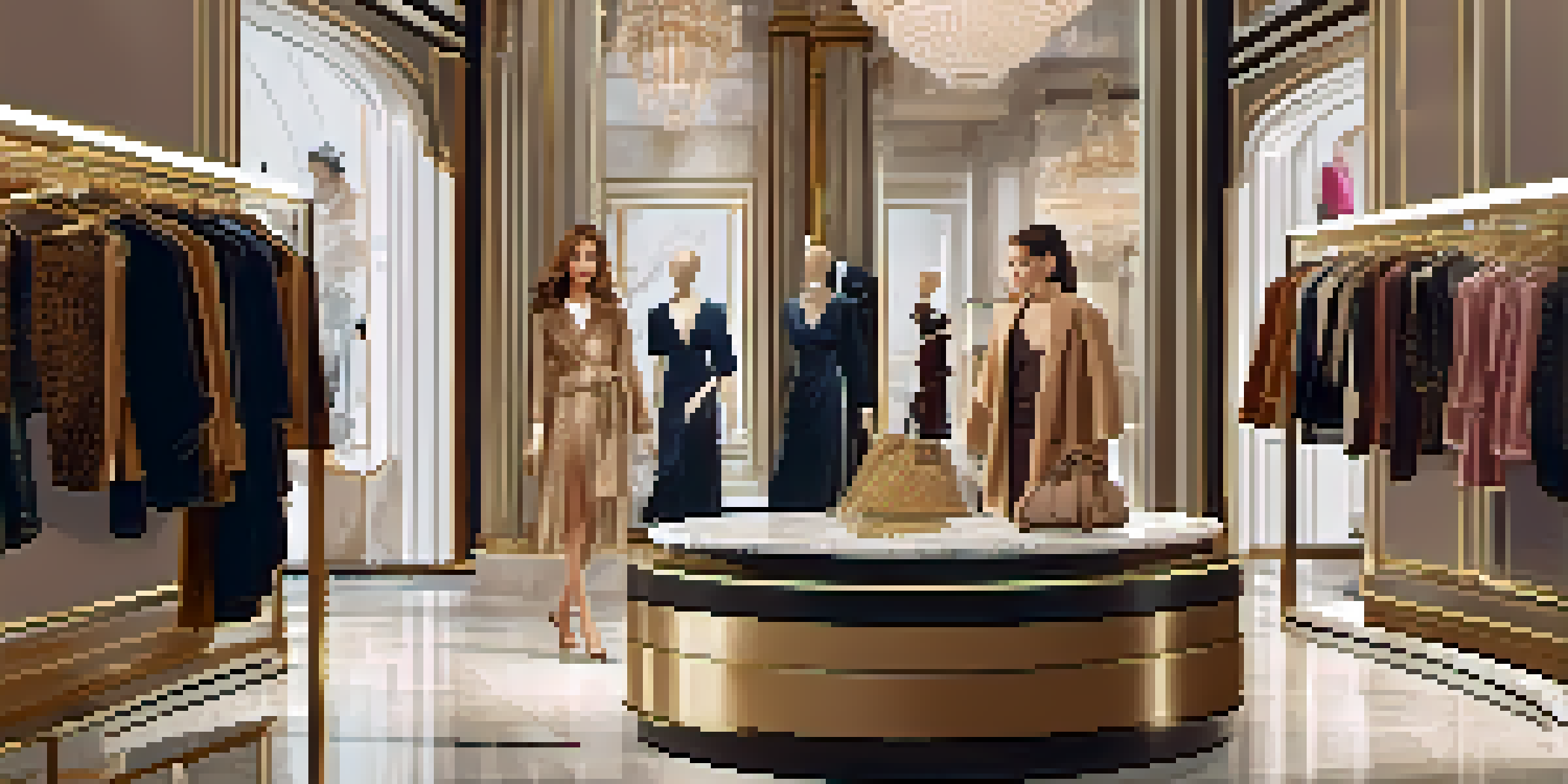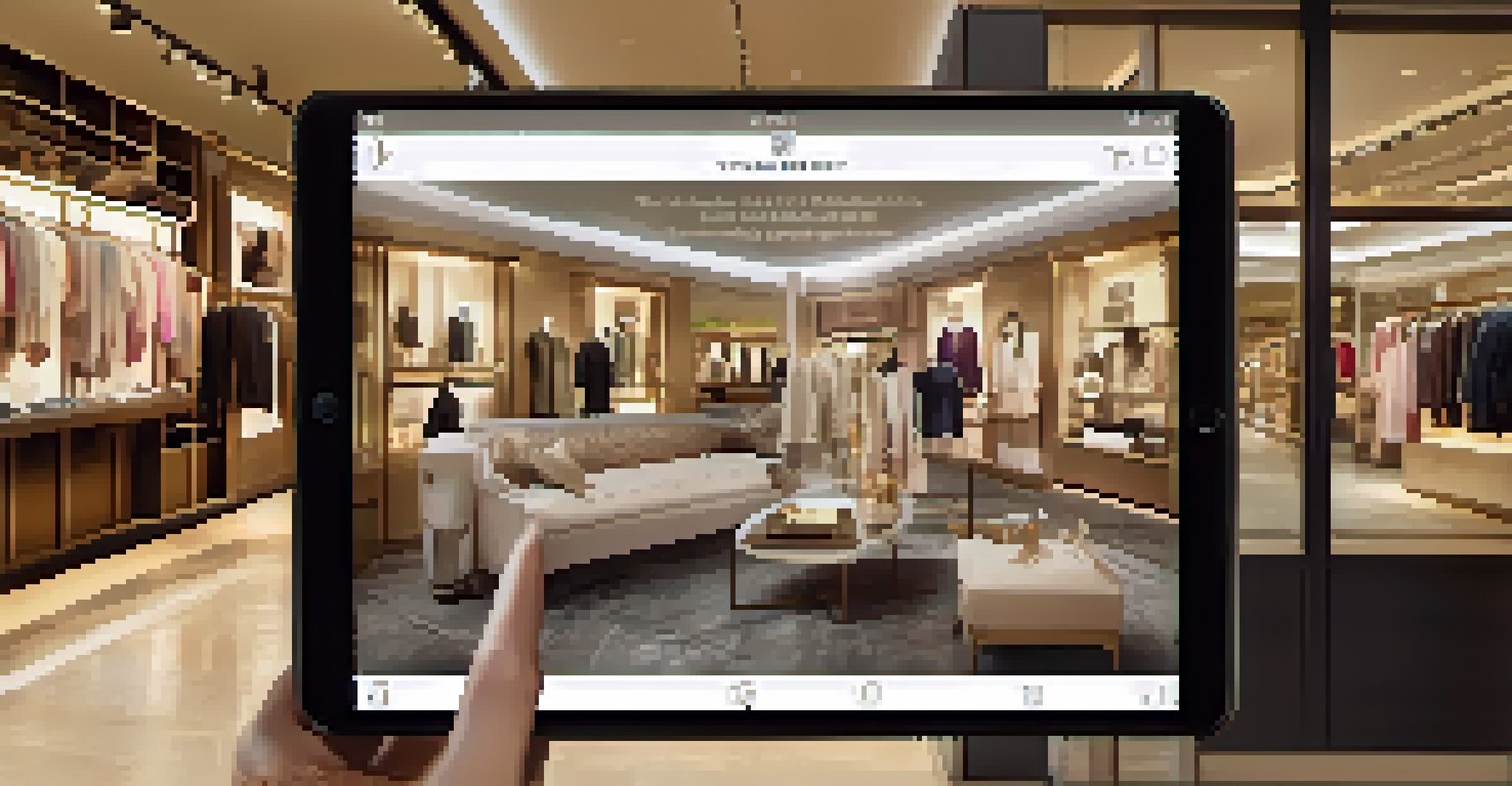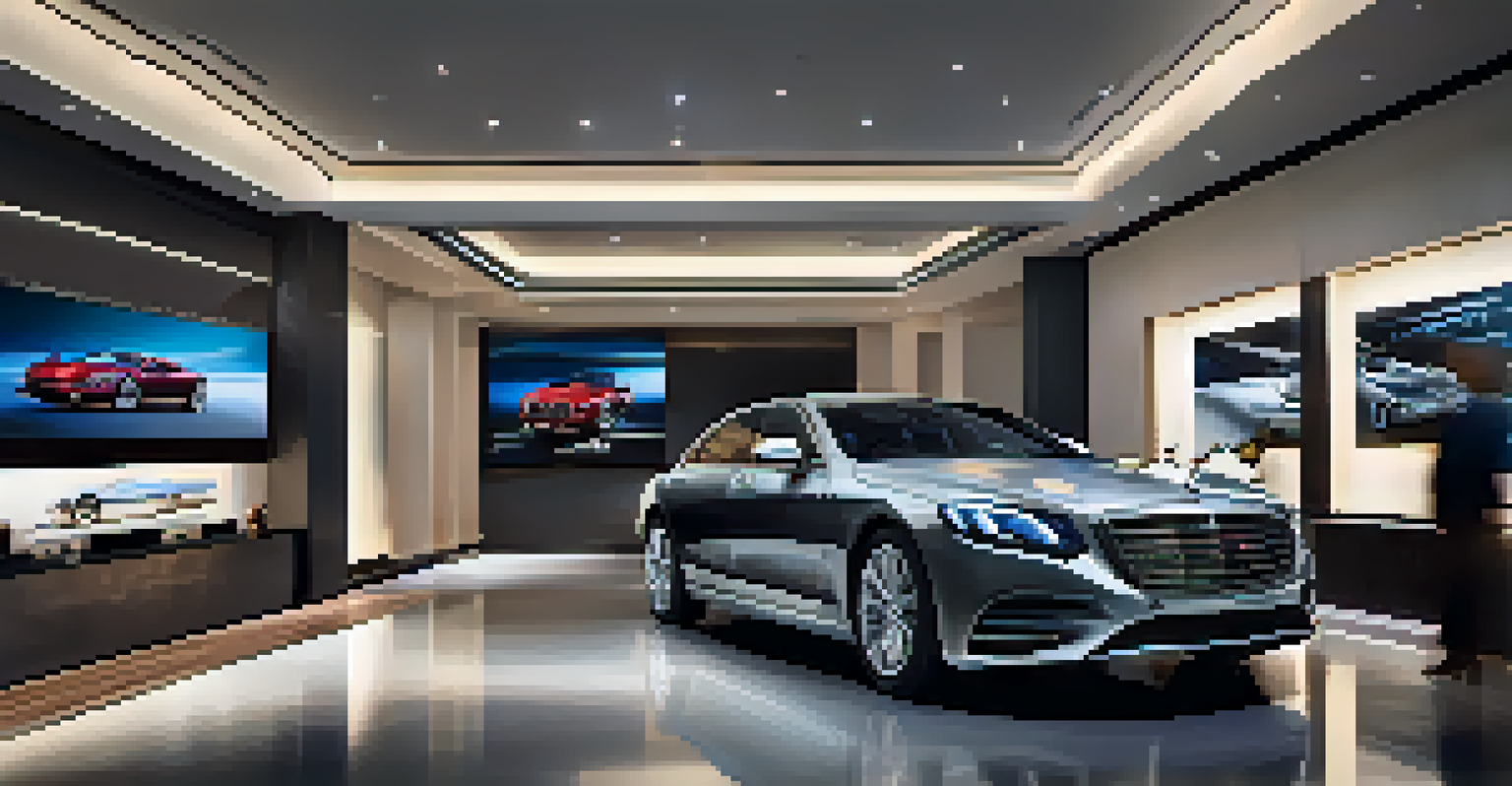Gamification in Luxury: Enhancing Digital Customer Engagement

Understanding Gamification in the Luxury Sector
Gamification involves incorporating game-like elements into non-game contexts, aiming to enhance user engagement. In the luxury sector, it transforms traditional marketing approaches by creating interactive experiences that resonate with affluent consumers. For instance, luxury brands are using gamification to turn shopping into an engaging adventure, making the experience more memorable.
Gamification is not just a way to engage customers; it's a way to create a deeper emotional connection that fosters loyalty and community.
The goal is to create a deeper emotional connection between the brand and its customers. By integrating elements such as rewards, challenges, or leaderboards, luxury brands can encourage customers to participate more actively. This approach not only entertains but also fosters brand loyalty, as customers feel more invested in their interactions.
Ultimately, gamification helps luxury brands stand out in a crowded marketplace, appealing to tech-savvy consumers who appreciate innovative experiences. As digital engagement becomes increasingly vital, understanding this concept is crucial for brands looking to thrive in the modern luxury landscape.
Creating Unique Experiences through Gamification
Luxury brands can leverage gamification to create unique experiences that captivate their audience. By designing interactive challenges or exclusive events, they can offer customers a chance to engage with the brand in a novel way. For example, a high-end fashion brand might launch a virtual treasure hunt, allowing customers to explore their online store and discover hidden rewards.

These unique experiences not only make shopping more enjoyable but also encourage customers to share their adventures on social media. This organic promotion is invaluable in the luxury sector, where word-of-mouth and exclusivity play significant roles in brand perception. Plus, when customers share their experiences, it cultivates a sense of community around the brand.
Gamification Boosts Luxury Engagement
Luxury brands use gamification to create interactive experiences that enhance customer engagement and foster brand loyalty.
Moreover, crafting these experiences allows luxury brands to gather valuable data on customer preferences and behaviors. Understanding what resonates with their audience helps brands refine their offerings and enhance future engagements, creating a continuous cycle of improvement and satisfaction.
Leveraging Rewards for Customer Loyalty
Rewards are a powerful tool in gamification, especially in the luxury market. By offering exclusive incentives, luxury brands can motivate customers to engage more frequently with their products and services. For instance, a luxury hotel might provide points for each booking, which can be redeemed for upgrades or special experiences, enticing customers to return.
The future of luxury marketing lies in creating experiences that resonate with customers on a personal level, and gamification is a key tool in achieving that.
These rewards not only enhance the overall customer experience but also cultivate a sense of achievement. When customers earn points or badges, they feel recognized and valued, fostering loyalty and encouraging repeat business. This is particularly important in the luxury sector, where maintaining a loyal customer base can significantly impact a brand's success.
Additionally, gamified reward systems can create a competitive edge among luxury brands. As customers compare their experiences and rewards across different brands, those offering the most engaging and valuable incentive systems stand to gain a larger share of the market.
Building Community Through Gamified Engagement
Gamification can also help luxury brands build a sense of community among their customers. By creating platforms for users to interact, share experiences, and compete, brands can foster a loyal following. For instance, a luxury watch brand might host a competition for the best photo of their timepiece, encouraging customers to engage with one another.
This sense of community not only enhances customer satisfaction but also strengthens brand loyalty. When customers feel part of a larger group, they are more likely to advocate for the brand and share their experiences with others. This organic engagement can lead to powerful word-of-mouth marketing, particularly in the luxury sector, where personal recommendations carry significant weight.
Unique Experiences Drive Sharing
By offering exclusive challenges and events, luxury brands encourage customers to share their experiences on social media, promoting organic brand awareness.
Moreover, community-building through gamification allows luxury brands to gather feedback and insights directly from their customers. By understanding what their audience values, brands can tailor their offerings and enhance overall customer experience.
Enhancing Customer Insights with Gamification
Incorporating gamification into customer engagement strategies provides brands with valuable insights into consumer behavior. By analyzing how customers interact with gamified elements, luxury brands can better understand their preferences and motivations. For example, tracking which challenges are most popular can inform future marketing strategies and product offerings.
This data-driven approach allows luxury brands to stay ahead of trends and adapt to changing consumer preferences. By continuously refining their gamification strategies based on customer insights, brands can create more personalized and relevant experiences. This not only boosts engagement but also enhances customer satisfaction.
Furthermore, understanding customer behavior through gamification can lead to improved targeting in marketing campaigns. By knowing what resonates with their audience, luxury brands can craft messages that are more likely to engage and convert potential customers.
Case Studies: Successful Gamification in Luxury Brands
Examining successful examples of gamification in luxury can provide valuable insights. For instance, a well-known luxury fashion brand might launch a seasonal campaign where customers can unlock exclusive content or products by completing various challenges. This not only incentivizes participation but also enhances the overall shopping experience.
Another example is luxury car manufacturers that host virtual driving experiences or simulations, allowing customers to interact with their products in a unique way. Such initiatives not only engage potential buyers but also create excitement and anticipation around new releases, ultimately driving sales.
Data Insights Shape Future Strategies
Leveraging gamification allows luxury brands to gather valuable customer insights, enabling them to tailor offerings and improve marketing strategies.
These case studies demonstrate how innovative gamification strategies can lead to increased customer engagement and loyalty in the luxury sector. By learning from these successes, other brands can adapt and implement their own gamified experiences to captivate their audiences.
The Future of Gamification in Luxury Marketing
As technology continues to evolve, the future of gamification in luxury marketing looks promising. With advancements in augmented reality (AR) and virtual reality (VR), luxury brands can create even more immersive experiences for their customers. Imagine trying on a luxury handbag virtually before purchasing it—this level of interaction could redefine customer engagement.
Moreover, the ongoing integration of artificial intelligence (AI) can personalize gamified experiences, tailoring them to individual customer preferences. By analyzing customer data, AI can create customized challenges and rewards that resonate with each user, enhancing their overall experience.

As more luxury brands explore these innovative technologies, gamification will likely become a standard practice in enhancing digital customer engagement. Embracing these trends will not only keep brands relevant but also ensure they continue to captivate their audience in an increasingly competitive marketplace.